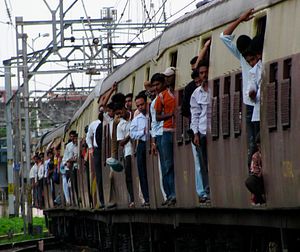India unveiled its 2015 railway budget on Thursday, revealing a substantial $137 billion boost in funding to update and upgrade the country’s aging but expansive rail network. The railway budget is part of the Narendra Modi government’s broader public budget for 2015. Railway Minister Suresh Prabhu introduced the budget, noting that the government would put much of the allocated funds into modernizing the existing tracks in the Indian railway network and upgrading the trains themselves. Last year, the Bharatiya Janata Party (BJP) drew some controversy when its railway budget included an increase in national rail fares.
Prabhu, in his justification of the budget before India’s parliament, told lawmakers that the government would raise funds to pay for the planned upgrades from international lenders, infrastructure and pension funds, and, curiously, through the “monetization” of Indian railway assets. The minister noted that privatization was not part of the government’s budget plan.
The minister focused on four main goals of the railway budget, to be implemented over the next five years: “giving a huge boost to customer experience, ensuring safer travel, modernization of infrastructure and making Indian Railways financially self-sustainable.” In concrete terms, the government is planning on increasing the Indian railway network’s maximum service capacity from 21 million to 30 million passengers daily. Additionally, the minister notes that the government plans to “increase track length by 20 percent from 114,000 km to 138,000 km, and [grow] annual freight carrying capacity from 1 billion to 1.5 billion tonnes.”
The Indian government’s railway expansion plans also have a strategic dimension, particularly in India’s northeast. Across the border from the disputed regions of Arunachal Pradesh and Aksai Chin, China has spent considerable capital developing its national railway infrastructure. In Arunachal, in particular, locals have long felt a lack of attention from the Indian central government. Narendra Modi’s government has already declared plans to devote more resources to developing infrastructure in India’s borderlands, and the 2015 railway budget increase will likely make this difficult task slightly more realistic.
India’s expansive railway network was implemented by the British when the country was under colonial rule. Today, India enjoys the world’s largest and densest national rail network. Over 23 million Indians use the national railway network each day. Over 12,000 trains run on Indian railway tracks daily.
India’s 2015 budget reveal will be completed over the course of this week, with important implications for the future of infrastructure development and foreign investment. Narendra Modi’s government has been criticized for insufficient vigor on economic reform. This budget will be an important moment for his government to restore some of the excitement that surrounded his electoral victory in May 2014.

































